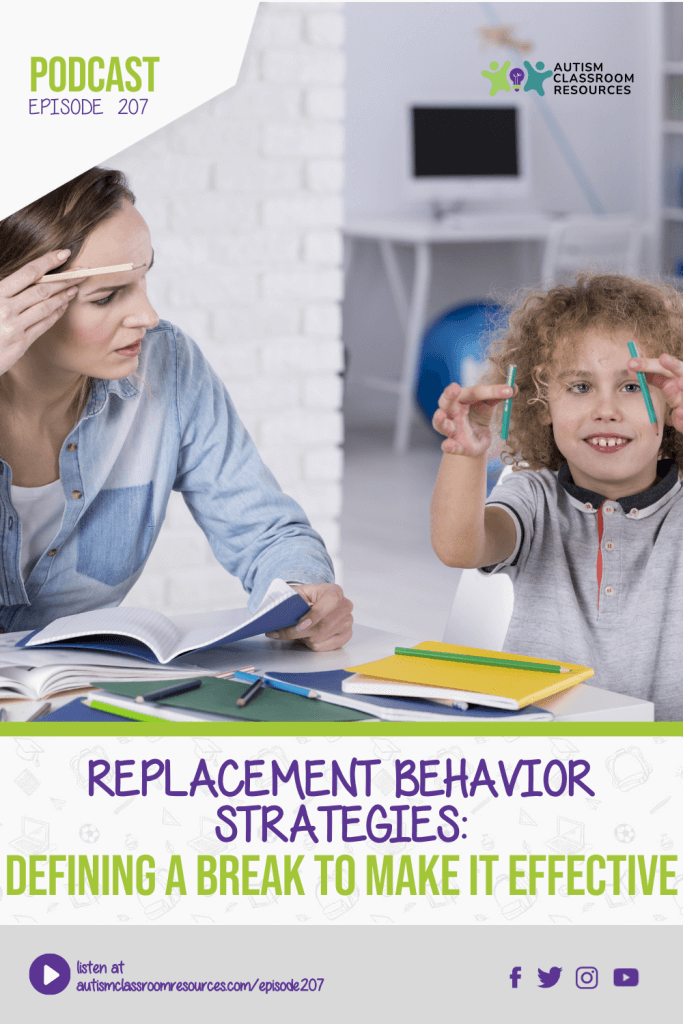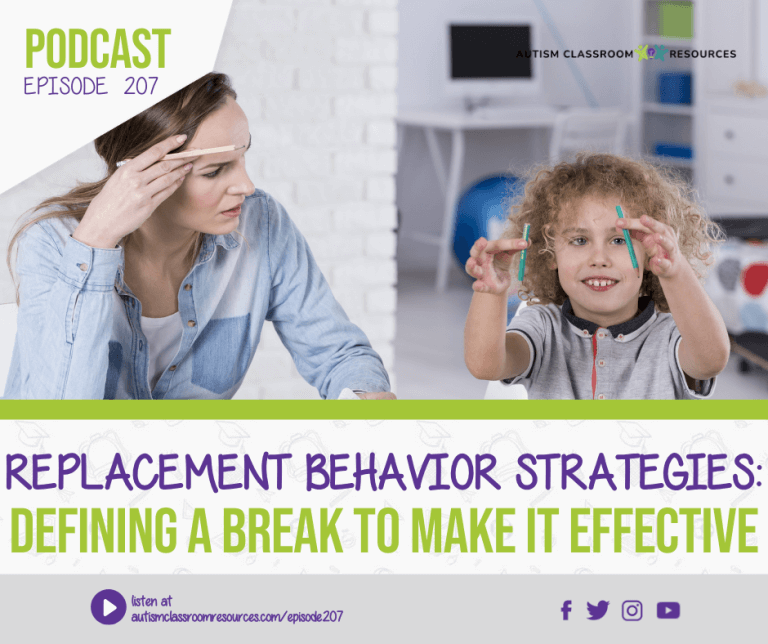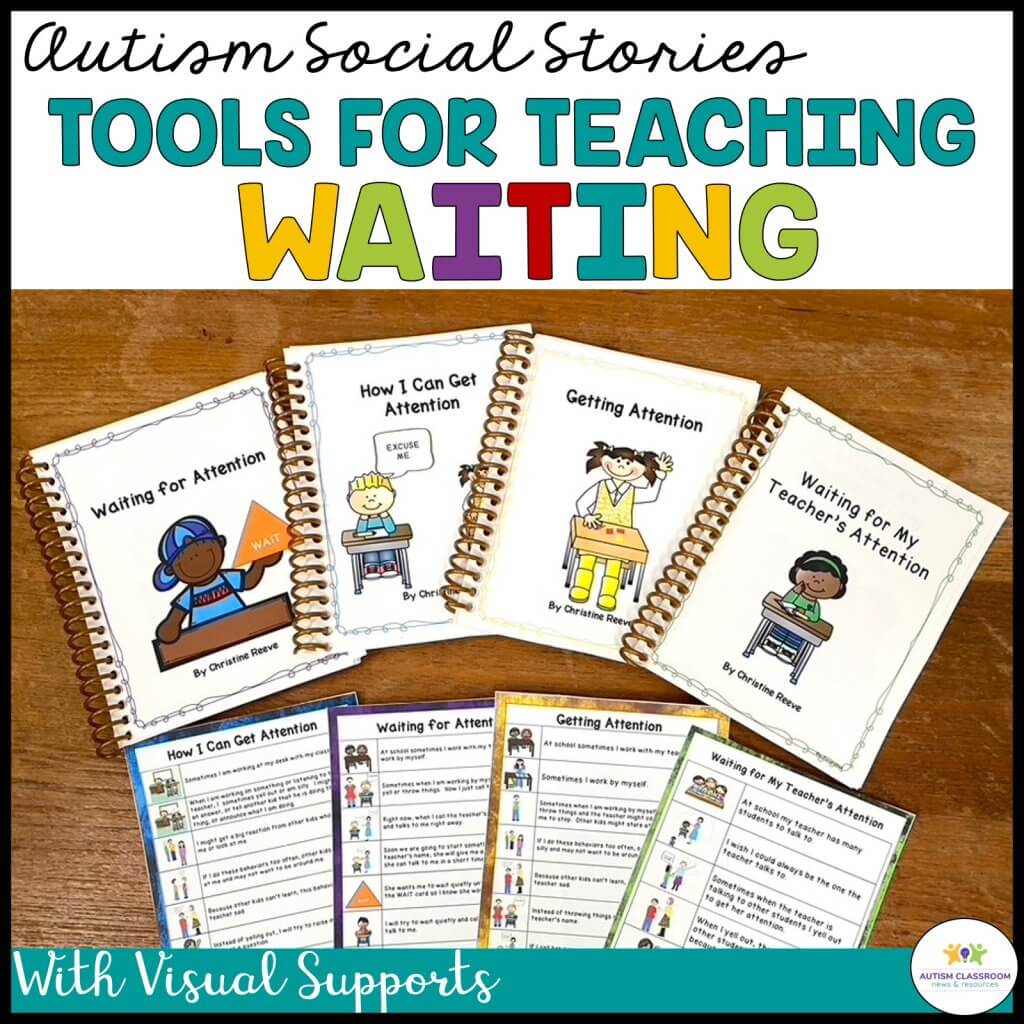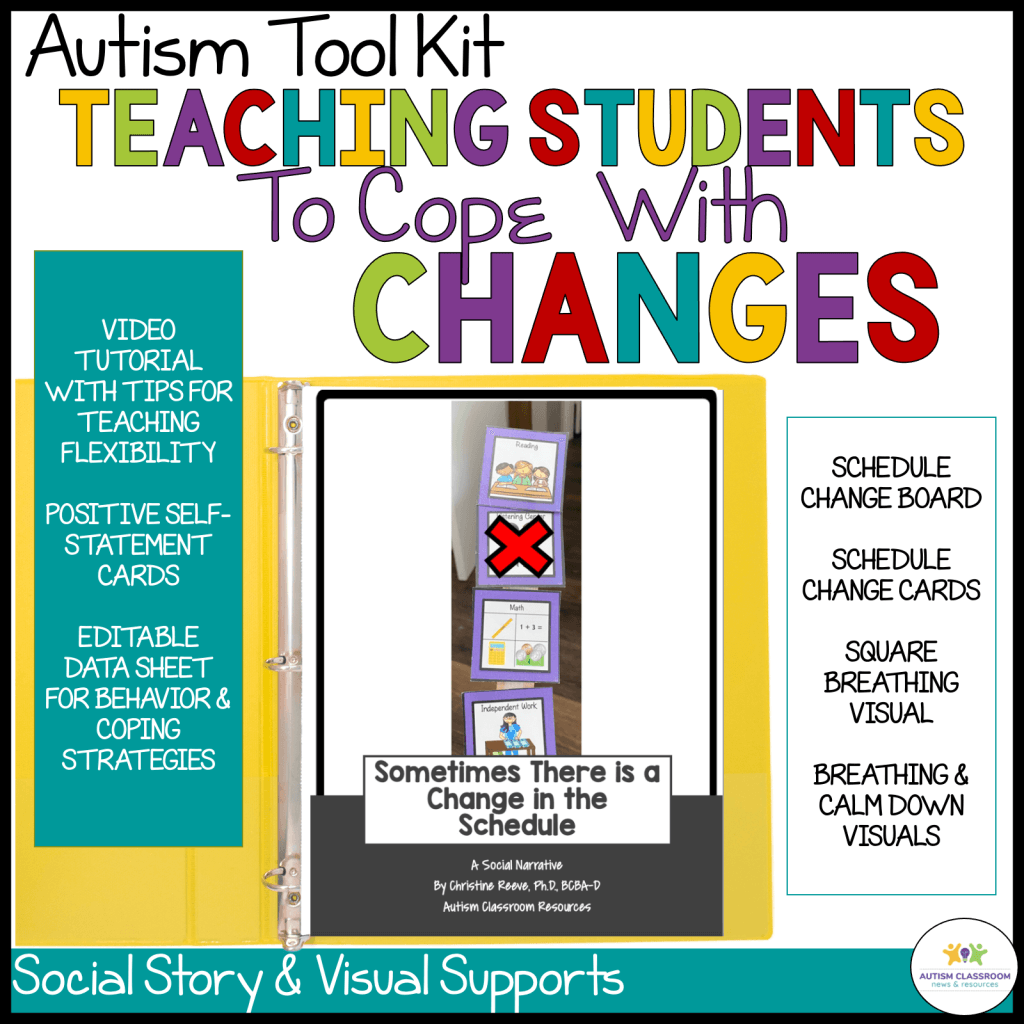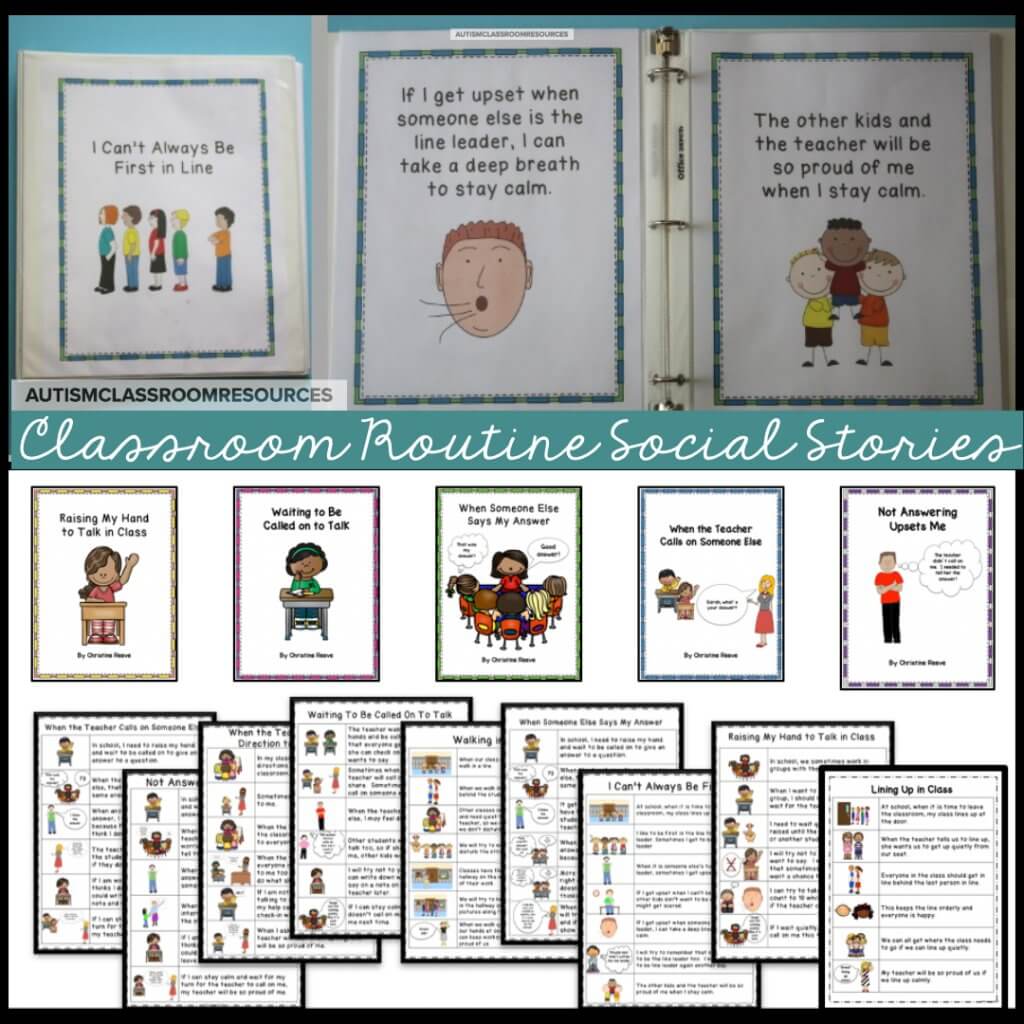Welcome to the Autism Classroom Resources Podcast, the podcast for special educators who are looking for personal and professional development.
Christine Reeve: I’m your host, Dr. Christine Reeve. For more than 20 years, I’ve worn lots of hats in special education but my real love is helping special educators like you. This podcast will give you tips and ways to implement research based practices in a practical way in your classroom, to make your job easier and more effective.
Welcome to the Autism Classroom Resources Podcast. I’m Dr. Christine Reeve, and I’m your host. For those of you who don’t know me, I have a PhD in Clinical Psychology, in addition to being a board certified behavior analyst, and I really like to talk about how we take what we know that is research effective, and work on it on making it so it’s actually accessible in real life environments. So you are listening to Episode 207.
In our last episode, Episode 206, I talked about teaching students to ask for a break to replace a challenging behavior that serves to get a student out of or away from something. And I promised that I would come back this week to talk specifically about what that break should look like. And that is indeed, our focus today.
If you have a student who you are trying to teach to ask for a break, or to tell you that he doesn’t want to do something, or to ask to leave, but it’s just not working, but you’re sure that your functional behavior assessment indicates your behavior is to escape from something, then I think this episode might be able to help. So let’s get started.
Now, I covered this a little bit in last week’s episode, which I grant you was longer than my normal episodes. So I will try to keep this one a bit shorter. It’s very, very important that we have a very well defined hypothesis statement in our FBA. Now, this is true whether you are doing a full FBA with all the paperwork or whether you’re doing an FBA of I’ve watched this kid and I’m pretty sure this is the function of the behavior.
One of the great things about FCT is it will take some time to see if what you’re doing is effective. But it’s not a punitive type of system. So it’s something where you’re teaching communication skills, which is a good thing. And so you can sometimes use your functional communication training as your assessment of whether or not your thoughts about the functional behavior are accurate.
So if you really feel like you have a really good understanding about the function is important. But with that said, make sure that you have lots of information about when and how the behavior happens. Because it’s not enough just to say, oh, it’s an escape behavior. And I hear this all the time. It’s an escape behavior. What do you think it’s a function in the behavior? It’s escape. It’s like, okay, well, that really doesn’t tell me anything. It just tells me he wants to escape from something. But I don’t know what he wants to escape from.
So I really need more. I really need to know, what is he trying to escape from? What does he like to do? What does he want to do instead of the thing he’s trying to get away from? So the more information you have about when and how that happens, the more that you’re going to have a good idea about what the break should actually look like.
Because you will have some students that if they were having behaviors to get out of working at the table, and you just took all the work away and let them sit there, they’d be fine. That would be enough of a break for them. But you’re going to have other students that are going to need you to talk to them during that time, or engage them in some way, or let them play with something else that they like. They’re not just going to sit there and do nothing.
So there are some kids for whom leave me alone, and don’t make me do anything, and don’t give me anything around me, is a break. But for a lot of our students is going to involve something like now let’s talk about something you want to talk about. Or now let’s play with something that you enjoy. or Now let’s you know, go over and talk to the para you really like for two minutes, and then we’ll come back and do some more work.
So you really want to know as much as you possibly can. Because it’s important to remember that we’re teaching students a replacement behavior that serves the same function as the behavior, not just the skill that we want to see instead. So the more that we know about why the behavior is happening, the better decisions we can make about what we’re going to replace it with, because then we really know what it is that we’re making a difference with.
So let me give you an example of why this is so important. I had a student that we were teaching him to ask for a break. And the break was that he got to go away from the table to a specified area of the classroom, there wasn’t a lot to do in that area of the classroom, it was kind of a calm down area that didn’t have a lot of stuff in it. And he was a kid that was pretty social. And so what we found was that over time, he was tearing up the break area, because he didn’t want to be there. And that wasn’t really what he wanted when he wanted a break. He didn’t want to just get away from that other thing. He needed something to engage him at the same time.
And I think a lot of times, we think of students who have escape related behaviors as not wanting to be in that situation. But in reality, it may just be they don’t like that task, or they don’t like that situation. Doesn’t mean they don’t want to be with you at all others of them are hands off, get away from me, leave me alone. So again, your hypothesis should tell you that.
So let’s talk a little bit about kind of what we know about what a break could and shouldn’t look like. One of the things that I say frequently is that a break is not timeout. And let me repeat that a break is not timeout. And I could say it a third time, but I’ll spare you because I’m perseverating. I’m perseverating for good reason. Because we are trying to get the student to make this request instead of having the challenging behavior.
Now, I talked last week about the efficiency of the response that we choose as a replacement behavior, and how it has to get what they want faster, easier, and more consistently. Well, if, frankly, I don’t know about you, but I don’t ask to get well, I don’t know I’m an adult, sometimes there are times I would ask to go to timeout.
But most of the time, I’m not going to ask to go to time out. And most students will not ask to go to timeout. And yet, a lot of times when we set up our break area, it becomes like timeout. Go sit over there for two minutes, and then come back and we’ll do work.
That’s not really a break. When I take a break from work. Well, sometimes I do go unload the dishwasher. But when I take a break from work, it’s not usually go sit in a chair and think about what I’ve done kind of thing. It is not timeout, I don’t regularly ask for things I don’t want. So if I don’t like timeout, then I’m not going to ask for it. And it’s not going to replace the behavior because I don’t want it.
I had a little guy one time, who, when I met him, his behavior was really severe. And he had a behavior plan in place from a behavior analyst. But the behavior analysts had written that, essentially, the break was timeout, he was to go and sit in an area that had nothing to do and no one was to interact with him. Okay, this was a kid who was like, really, really social. And he loved interacting with people, he just didn’t like doing things that were hard for him to do. And if he was afraid that you were going to give him something that was going to be hard for him to do, he would just start acting out, start the behavior before we even presented what we wanted to do.
So it was very clear from watching him, I’m like, I wouldn’t ask to go sit in that corner either. That’s not how we’re gonna get him to ask for something that, you know, we want him to do that he want, it has to serve the same function.
So we want to think about that. And we want to think about the fact that if we wanted to put him in timeout. I mentioned last week that when you are choosing what your response is going to be, what communication response is going to be, you know, everybody has different ideas about what it is. I use asking for a break. Because that’s something I think most people understand. And most people don’t say, No, you can’t do that. If I say I don’t want to do this, teacher’s don’t always like to hear that. So I don’t tend to use that one.
You know, the little guy with timeout, one of the problems was he was using the term asking, he was asking for a break, and it meant timeout. So we couldn’t use break. So I had to think of something else. And I was really tired by the end of that day of figuring out what was going on. And so I was just like, You know what, I’m just going to start with, I don’t want to. That’s not what I would like him to have forever. Because again, people don’t respond well to it. But I’m gonna start there.
Now his teacher over the course of the next year got him to the point where he would say no thank you, which was much more amenable to his environment. But so we can change those over time. But the success of it is is really, really important. So keep in mind that a break is not timeout. We want to make sure that a break is something the student wants, because we want them to ask for it.
It’s important to remember too, that you don’t have to have a specific break area in your classroom. There’s no requirement that says, you have to have a calm down corner in order to do this type of intervention. And in fact, for some of our kids, they don’t want to go to the calm down corner, that’s not their idea of a break. You know, you could have a book corner for some kids. I had a kid who used to, if you gave him a book, that was his break. Or a leisure area. You might have a place with magazines for teenagers, or it might just be I get to sit at my desk and look at my iPhone pictures of my cat, which was another one that we used for students.
You know, I used to have a high school students that I worked with whose break was to lie on the couch and choose the music that she listened to. And so we would set a timer for three minutes, and she got to listen to the music, maybe they’d listen through headphones. We gave a one minute warning, we turn the music off, that was the cue that it was time to start the work again.
Maybe it is a sensory area that we’ve set up either in the classroom or outside the classroom. Those might work really well for students who have problems with self regulation. But keep in mind whether or not A.) this is someplace that the student wants to be, and B.) is it something that’s going to overwhelm them. Because a lot of times sensory rooms are really sensorily overwhelming. So you want to make sure that you’re not actually making your self regulation problems more difficult in that way.
It’s also important to recognize that breaks may or may not include people. I’ve had some students who really benefit from the opportunity to swing or do another calming activity. And they were like, Okay. They’re hands off, we don’t need to be around them, they just need to, like do this and self regulate again. The swings are highly appealing to a lot of our students, because a lot of times it kind of cradles them with the netting or things like that.
You know, I had a guy though, who, if I gave him a break on the swing, and we didn’t have people with him, the challenging behaviors kept going. But if we gave him a break on the swing, and somebody hung around and talked to him, just talking to him wasn’t enough, we had to have a swing and somebody talking to him. That was his idea of a break. That was a break that worked for him. He likes an audience. So his break typically involves someone pushing the swing, playing music, or talking to him.
Based on his challenging behavior in his FBA, his behavior was typically escaped motivated, but gaining attention was a secondary function. So he needed a combination of those two in their breaks. And we can gradually fade out the attention part and gradually make his work more and his break smaller. And we’re going to do all that. But we have to start where they’re at.
Another the thing we could do for break is we can offer choices. Maybe the break doesn’t always need to be the same, I don’t take the same kind of break every time I take a break from work. So you know, sometimes we can mix it up. So having a visual choice board or something like that is a way for them to make a choice, it’s also a way for you to change up the menu, if something isn’t available for some reason.
You decided you didn’t want the highly preferred activity to be the break every single time, then you could remove it from a choice board, don’t remove it from a communication device. But for choice board, these are the choices that are available, that’s different than these are the things I can ask for on my device, which is just like my voice.
So just remember that the choices have to be something that the student likes, or they’re not gonna ask for it. You know, if you’re a student who likes to fingerpaint, sometimes that’s an opportunity. Sometimes it’s going to be too messy, it’s the end of the day and the bus is coming. So it’s not a good time to do that. So you know, we might want to think about that.
And, finally, breaks can also be an opportunity for emotional regulation. So you might have a break corner where maybe you’re using the five point scale to have the student rate where they are at the beginning of the break and at the end of their break. So they know that they can move on when they’re down at a one or two, because when they got there, they were four or five. They need to already know how to use that if they’re going to do it by themselves. But that may be a way to start building some independence at taking those breaks as well.
But again, if they’re asking for a break, you shouldn’t be sending him them to that calm down corner as a punishment. It shouldn’t be similar. We always send the student because they need to calm down and they’re being a problem. You don’t want to get those two confused.
So how long a break lasts, and what it looks like is all going to depend on the needs of the students and the situation. Your FBA should give you some information about how to make those kinds of decisions and what it might need to look like. But just always remember that your brake needs to be reinforcing, since that’s what they’re going to ask for.
Just
remember, we don’t ask for things we don’t want. For some students that may need getting a drink of water and walking it off during a baseball game. You know just go walk around the track once and then come back.
We all take breaks, typical kids take breaks, there’s nothing wrong with taking a break. The difference for some of our students with challenging behavior is that they don’t know how to ask for that break, or that break has not consistently been reinforced for them so there was really no point in asking for it. Their challenging behavior, however, was consistent at getting them removed from the situation. So we’re trying to flip that. So our focus is going to be on how to increase the communication, while we decrease the need for the challenging behavior.
So if you are looking for more information on functional communication training, we have a whole workshop on it. And then we have a whole course on behavioral support and FBAs in the Special Educator Academy, so you can come check us out at specialeducatoracademy.com.
You can also grab data sheets for monitoring your students break use and progress to look at whether or not you’re getting shorter or fewer breaks, versus it staying the same in my data collection sheets on TPT at autismclassroomresources.com/behavior-data-sheets. If you want the tools to help you implement functional communication training, and specifically teaching a break, you might want to check out my calm down tools for self regulation in my store. They have both social stories and visuals that can help teach a student to request a break. But there’s also a protocol for the steps of teaching the skill in that set as well. You can find that at autismclassroomresources.com/calm-down.
So that’s it for this week. I’ll be back next week when I’ll be actually be shifting to talk about attention seeking behavior. In case you have students who really want attention all the time. We’ll be talking about that then. And if you’re enjoying the behavior series on the podcast, don’t forget to hop over to Apple podcasts and leave a rating and review. I’d really love to hear from you. Talk soon.
Thanks so much for listening to today’s episode of the Autism Classroom Resources podcast. For even more support, you can access free materials, webinars and Video Tips inside my free resource library. Sign up at autismclassroomresources.com/free. That’s F-R-E-E or click the link in the show notes to join the free library today. I’ll catch you again next week.

